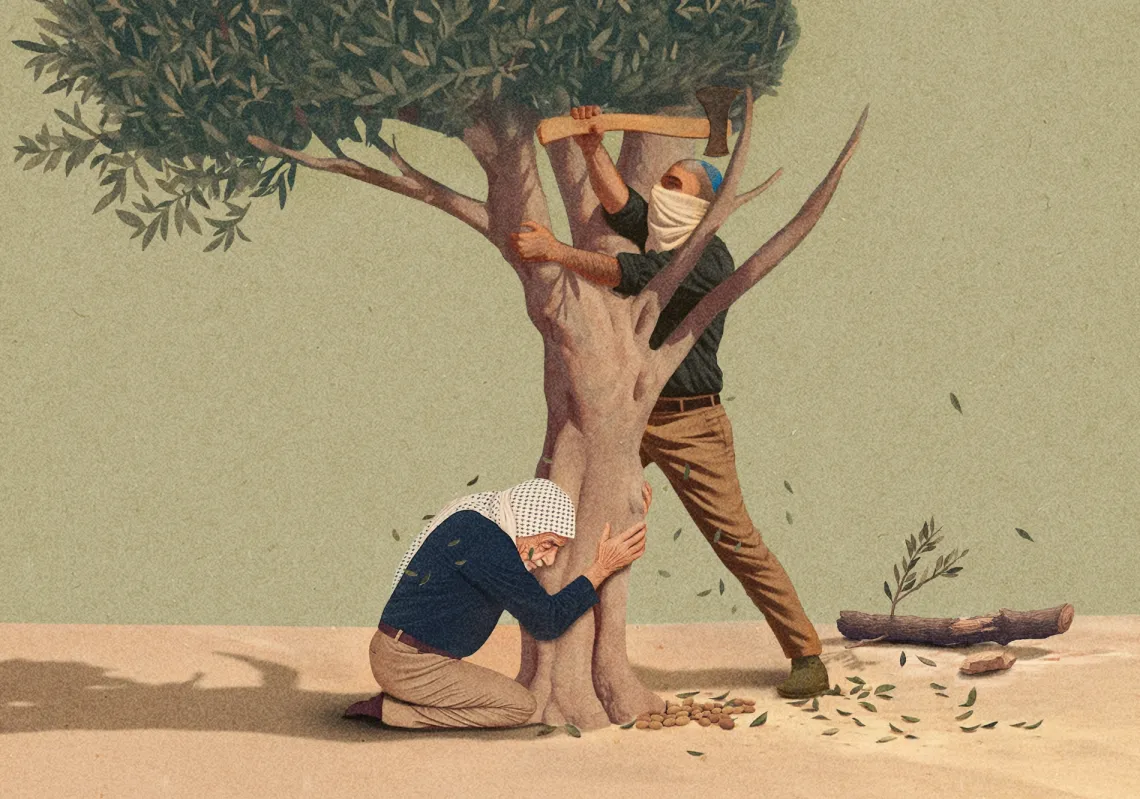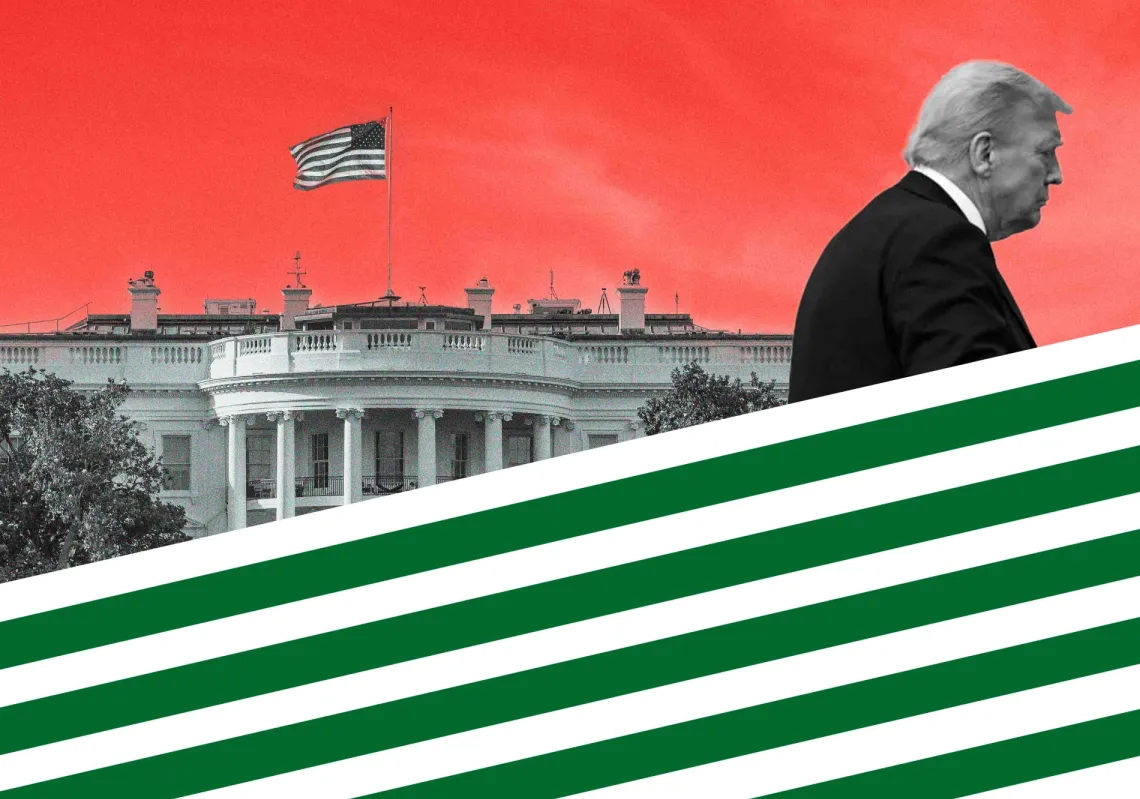 A carved milestone dating back to the eighth century is on display during a press preview of the “Roads of Arabia” exhibition at Berlin's Pergamon museum on 25 January 2012. Source: AFP/Getty Images[/caption]
A carved milestone dating back to the eighth century is on display during a press preview of the “Roads of Arabia” exhibition at Berlin's Pergamon museum on 25 January 2012. Source: AFP/Getty Images[/caption]
Excavation of archeological sites only began in Saudi Arabia in the 1970s, yet these digs have already brought an astonishing wealth of treasures to light. They are astonishing because these digs are uncovering a virtually unknown ancient past. “Some of it has just come out of the ground only two years ago,” says Massumeh Farhad, curator of a revelatory exhibition displaying recently discovered archaeological material. Farhad is also Curator of Islamic Art at the Smithsonian’s Sackler Gallery, where Roads of Arabia, Archaeology and History of the Kingdom of Saudi Arabia is exploding myths about the Arabian Peninsula. Many people imagine that its history “doesn’t have the grandeur of other civilizations,” says Harvard archaeology professor C.C. Lamberg-Karlovsky, who took part in the first archeological explorations of the Peninsula. He insists that the aim of Roads of Arabia is partly to bury the international stereotype that the region is a land of oil wells and endless sands across which camels plod, with some high-rises thrown in. As well as mountainous areas, there are oases and important urban centers in which people have always lived. As long ago as the fourth millennium BCE, its history was formed by contact with surrounding civilizations and others further afield, a glorious heritage of which most of the inhabitants of Arabia are still unaware.
[caption id="attachment_55236481" align="alignleft" width="183"]
 A silver ladle (1st—2nd century CE)[/caption]
A silver ladle (1st—2nd century CE)[/caption]
In a sense, archaeology has caught up with legends about the region’s distant past, when incense was as valuable as oil is today. It was frankincense in particular, but also myrrh, travelling along Incense Routes—the “roads” after which the exhibition is named—that transformed small wayside villages into great oasis cities like the once-bustling Marib, in today's Yemen, which dates from the time of the Queen of Sheba. Like so many other centers of civilization, it was to be reclaimed by the desert in subsequent centuries. Caravanserais sprung up in the oases, offering accommodation and recuperation along the incredibly arduous and lengthy Routes. Many of them became cosmopolitan centers of wealth and artistic production; and most of them had bustling markets selling luxury goods. These are the objects on view in Roads of Arabia—discoveries from more than ten archaeological sites throughout the Arabian Peninsula that have radically transformed our understanding of the region.
Most eye-catching of these artifacts include a trio of monumental human statues, a haunting gold funerary mask for a little girl, precious jewelry deposited in tombs, finely forged bronze Hellenistic statuettes, elegant alabaster bowls, silver dishes, and fragile luster glassware. All of the artifacts demonstrate a vibrant cultural and mercantile interchange between the Arabs and their neighbors, among them the Babylonians, Syrians, Egyptians and Greco-Romans. “What they actually show,” says Farhad, “is that the region was not an isolated backwater, but a considerable economic centre of the ancient world.” It was certainly not on the periphery of this ancient world, but dynamically at the nexus of trade linking India and China to the Mediterranean and Egypt, Oman to Mesopotamia. In effect, it was an ancient Arabian bridge between East and West.
Roads is the first comprehensive international exhibition of historical artifacts from the Arabian Peninsula. There are more than three hundred items on display, spanning more than a million years from the Paleolithic era to the 1932 birth of the Kingdom of Saudi Arabia. Their provenance is principally from the National Museum in Riyadh, as the exhibition was organized by the Sackler in association with the Saudi Commission for Tourism and Antiquities. There are also maps lent by London’s Royal Geographical Society of railways built by the Ottoman Turks in the early twentieth century to convey pilgrims on Hajj, a second aspect of “roads” in the exhibition: the routes of pilgrims to Mecca and Medina. In addition, there are textiles and ceramics lent by museums in Paris—the exhibition opened at the Louvre, and then travelled to Barcelona, St. Petersburg and Berlin.
Roads of Arabia is organized in three sections. The first, after a nod to some remarkable prehistoric finds, consists of discoveries from the ancient Incense Routes, starting in Oman, its principal source, and snaking northwards around mountains and vast, shifting sand dunes. The second part focuses on the impact of Islam after the seventh century, and especially the development of pilgrimage trails from major cities such as Cairo, Baghdad, and Damascus, converging on Mecca over some thirteen centuries. Highlights in this section include twenty finely inscribed tombstones that lend a human face to the difficulties faced by the multitudes of Muslims who travelled great distances to reach Mecca—journeys sometimes taking years—including some from south-east Asia and others from sub-Saharan Africa. Some pilgrims died en route; others at their goal. A particularly poignant example memorializes a father and daughter who both died on their pilgrimage from Morocco. These red, purple and grey basalt funerary stele bear names, tribes, lands of origin, and occasionally the professions of the dead and are elegantly inscribed in either the angular Kufic script, or later in the more supple cursive naskh form. One stele pays homage in stone to a slave woman as the mother of her master’s son. Another is double-sided—one face commemorating a perfumer-maker, the other a mournful elegy for a twelfth century Andalucían boy.
[inset_left]
[blockquote]The aim of Roads of Arabia is partly to bury the international stereotype that the region is a land of oil wells and endless sands across which camels plod[/blockquote][/inset_left]
The second section of the Islamic period also displays a lovely twelfth century lintel from a Red Sea port, with an inscription incorporating palm fronds and swans. On the road from Iraq, northeast of Medina, some remarkable objects were recovered from a once prosperous town called Al-Rabadha, which had numerous mosques, palaces, wells and extensive pastures. It became a favorite resting-place for pilgrims, but faded into obscurity when the pilgrimage route shifted in the tenth century. Among its treasures are a large, green, elaborately decorated Iraqi vase and a dramatic ninth century wall fragment inscribed in black Kufic script on a red and yellow background. Mecca itself is represented by a set of monumental hammered silver and gilt doors donated by an Ottoman sultan to grace the entrance to the Ka’ba.
The third section of Roads of Arabia introduces the creation of the Kingdom of Saudi Arabia in 1932 and explores the history of archaeology through photographs, maps, travel books and objects. The culture and artifacts of the Islamic period from the seventh century onwards are justifiably well known and documented. What is so extraordinary about this exhibition is that it opens “a new window onto a country (and region) whose pre-Islamic past is little known to anyone other than a handful of scholars today,” says Julian Raby, Director of the Sackler Gallery. Archaeologists describe the spectacular finds now emerging as created in “the intercultural style.” Although the history of the Peninsula is characterized by foreign interchange, early Arabian artists and craftspeople created their own distinctive aesthetic style, re-interpreting those foreign influences in an unmistakably original and unique fashion while absorbing influences from surrounding empires and kingdoms.
[caption id="attachment_55236482" align="alignright" width="300"]
 Dr. Julian-Raby with HRH Prince Sultan bin Salman bin Abdulaziz Al Saud at the exhibition opening[/caption]
Dr. Julian-Raby with HRH Prince Sultan bin Salman bin Abdulaziz Al Saud at the exhibition opening[/caption]
Around 4,500 years ago, by the middle of the third millennium BCE—as the climate of the Arabian Peninsula became hotter and drier—trade began to be recorded there. Several items in the exhibition were uncovered on the east coast island of Tarut. Grey and black soapstone jars and bowls are carved with entwined snakes, leopard-like cats, and lion-headed eagles. A limestone statue of a man, created around 2,500 BCE, resembles Sumerian ones, but is considerably larger than any unearthed in the Tigris-Euphrates region, and although the design draws on both Mesopotamian and Indus Valley styles, the sculptor has integrated them into his own sculptural interpretation. The port of Tarut is believed to have been the capital of the early Dilmun civilization that later, around 2200 BCE, shifted southeast to today’s Bahrain.
By 1,200 to 1,000 BCE, camel transport was overtaking travel by donkey, enabling journeys of much greater distance and revolutionizing Arabian trade. Along the Frankincense Route from Oman to Mesopotamia, large and prosperous cosmopolitan caravanserais were emerging. One of them, a particularly important crossroads in the northwest of today’s Saudi Arabia, was Tayma. Some Arabians grew rich from the incense trade, causing the region to be called Arabia Felix, Happy Arabia, by Greeks and then Romans, who were unhappy at the price of incense as it finally reached the Mediterranean, having vastly increased in value owing to travel expenses and protection money needed for the long, dangerous Routes from the south. The wealthy oasis of Tayma attracted the covetous eyes of the Babylonian King Nabodinus, who left his capital and occupied Tayma in order to control the traffic in incense, spices, metals, and precious stones. A fifth or fourth century BCE sculpture of a typical Babylonian priest was discovered there, standing before the Egyptian bull-god Apis, and set against a background of winged emblems and an eight-pointed star probably derived from the Anatolian civilization. Despite all this borrowed imagery from other cultures, it has its own unique Arab identity.
Around the time King Nabodinus was dominating Tayma, another major caravanserai and cultural centre called Dedan was emerging, the capital of one of the Peninsula’s least-known significant ancient powers: Lihyan, in the fertile Al-Ula valley. It seems that Lihyan was just as big and culturally important as the later and much better known Nabatean civilization. For around four hundred years, the Lihyanites controlled the trade routes from China, India, Oman, and Egypt, as Petra was later to do. Three colossal red sandstone statues depicting kings strike hieratic poses referencing Egyptian figures, yet their naturalism also relates to the Hellenistic style bequeathed by Alexander the Great’s conquest of Egypt in 332 BCE. The Lihyanite sculptors may have drawn inspiration from elsewhere, but give us their own hybrid style.
By the first century CE, north of Al-Ula, another centre dominating the Arabian caravan routes emerged. Mada in Salih became the southern outpost of the Nabatean kingdom. Photographs in the exhibition show elaborate Nabatean tombs whose façades are an eclectic mix of Egyptian, Assyrian, and Greco-Roman inspiration, though once again demonstrating a glorious and distinctive Nabatean style.

Further southwest, on the edge of the Empty Quarter, Qaryat Al-Faw became a cosmopolitan centre to which the Nabateans gravitated. For more than six hundred years, from the third century BCE to the fourth century CE, this oasis city—capital of the Kinda kingdom—was a hotbed of economic, political, religious, and cultural activity. It had palaces, three temples, and at least 120 wells. Its principle market was three stories high, surrounded by seven storage towers, while homes rose two stories, supplied with water and latrines. In the exhibition there are the usual luxury imports, such as Yemeni incense altars, bronze statuettes in the Egyptian Hellenistic style and Nabatean ceramics, but also locally produced artifacts trumpeting a highly sophisticated society. A life-sized head is crowned with a coiffure of tight curls. It is cast in bronze, whose manufacture was more developed in this city than in Greece or Rome at the time. It seems such curls were a fashion statement, since they reappear in a mural fragment depicting a man not only with thick black curls, but also a neat, pencil-thin moustache.
Last of the great archaeological sites yielding such refined treasures and from the same era as Qaryat Al-Faw in the west, is Gerrha, a port on the Persian Gulf, and the terminus of the over ground Frankincense Route. It prospered from both caravan and maritime trade in incense, perfumes, pearls, spices, ivory, Chinese silk and porcelain. Despite six hundred years of history, Gerrha disappeared without trace, until in 1998 exquisite artifacts were excavated at Thaj, now believed to have been the lost capital of Gerrha, and a huge site of many palaces. A six year-old girl, probably a princess, was buried here two thousand years ago, adorned with several items of jewelry, a belt, and a mask, all of pure gold. The delicately crafted repoussé Thaj Mask, as it has come to be known, reminiscent of the Mycenaean mask of Agamemnon, is displayed in Roads of Arabia. How many more such technically refined and aesthetically pleasing treasures will be unearthed in the future from beneath the sands of Arabia?
[divider]
Roads of Arabia, Archaeology & History of the Kingdom of Saudi Arabia is open until 24 February 2013 at the Sackler Gallery, Smithsonian Institution, Washington, D.C. After that, it will travel to Houston, Chicago, and San Francisco.









